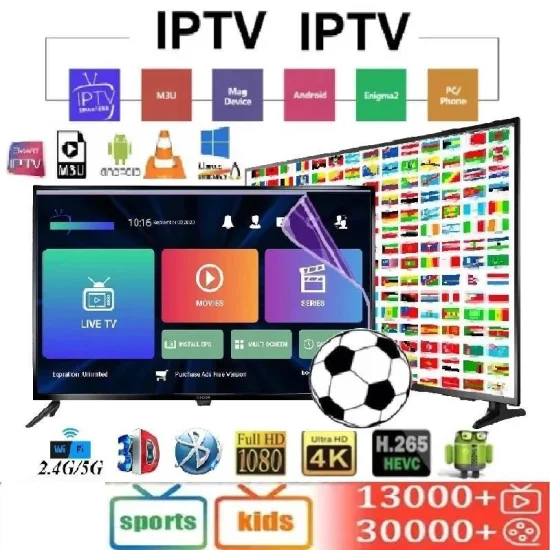Exactly How IPTV Works: A Step-by-Step Overview to Internet Method Television Technology
Web Method Television (IPTV) has actually reinvented the way we take in tv content, supplying a brand-new realm of opportunities with the power of the net. Understanding the ins and outs of how IPTV works can clarify the technology that drives this ingenious kind of media delivery. From the essential concepts of IPTV to the complicated procedure of web content distribution, each step plays an important duty in making sure a smooth watching experience. In this guide, we will discover the underlying devices that make IPTV a fascinating fusion of innovation and amusement.
IPTV Basics
In comprehending IPTV fundamentals, it is pivotal to understand the essential functions of this modern technology in supplying tv material over the web. IPTV, which means Web Method Tv, makes use of Net Procedure (IP) networks to transfer television content to individuals' devices. Unlike conventional methods of broadcasting tv web content through cable television or satellite signals, IPTV streams media through high-speed internet links.

Moreover, IPTV enables interactive abilities, such as video on need (VOD) and electronic program guides (EPG), boosting the individual experience by offering even more control and versatility in accessing content. Overall, recognizing the basics of IPTV establishes the structure for exploring its even more advanced capabilities and the advantages it provides to contemporary television usage.
Content Distribution Process
Efficient material shipment in IPTV systems involves a well-structured process that makes certain seamless transmission of television material over IP networks. The web content distribution process in IPTV begins with the production of the video clip content, which is then encoded right into digital format ideal for IP transmission.

Middleware Performance
With the combination of middleware, IPTV systems gain enhanced functionality that streamlines customer communication and material monitoring. Middleware functions as an important component that connects the void between the interface and the back-end framework, promoting smooth communication and communication within the IPTV system. Among the essential functions of middleware in IPTV is to make it possible for individualized individual experiences by giving attributes such as interactive program guides, video-on-demand solutions, interactive advertising and marketing, and individual choices administration. By centralizing these capabilities via middleware, provider can use a much more vibrant and tailored IPTV experience to their clients.

Device Compatibility
Given the critical function of middleware in allowing seamless interaction and content browse around this site administration in IPTV systems, an essential facet to think about is the compatibility of Clicking Here gadgets utilized for accessing the IPTV services. Tool compatibility is essential for ensuring a smooth user experience and optimum efficiency when accessing IPTV material.
In the context of IPTV, gadget compatibility refers to the ability of a device to properly connect with the IPTV solution, display material appropriately, and sustain the required procedures and codecs for streaming video web content over the net. Various devices, such as clever Televisions, set-top boxes, mobile phones, tablets, and computer systems, might have varying degrees of compatibility with IPTV services.
To ensure a smooth viewing experience, it is necessary for customers to select devices that are suitable with the specific IPTV solution they are utilizing. Additionally, IPTV provider ought to supply support for a wide variety of devices to deal with the diverse demands of their individual base. By focusing on gadget compatibility, both users and solution suppliers can enhance the general IPTV experience.
Quality of Solution (QoS)
Taking into consideration the critical function of keeping a high criterion of performance and reliability in IPTV systems, making sure regular Top quality of Service (QoS) continues to be a basic aspect of the user experience. QoS in IPTV refers to the ability of the system to provide material with marginal disruptions, high resolution, and quickly loading times.
Service suppliers utilize QoS systems such as traffic prioritization, buffering, and error adjustment to preserve a steady IPTV service. By prioritizing IPTV website traffic over much less time-sensitive information, suppliers can make sure smooth playback even during optimal use hours. Buffering assists compensate for network fluctuations, while error improvement methods improve data honesty.
Continual tracking and optimization of QoS parameters are necessary to adjust to altering network conditions and customer demands. Inevitably, a durable QoS framework is essential for providing a seamless and delightful IPTV experience to individuals.
Verdict
In final thought, IPTV operates with the transmission of click over here now tv content over web procedure networks. Quality of Service plays a crucial function in keeping the performance and dependability of IPTV solutions - IPTV subscription.